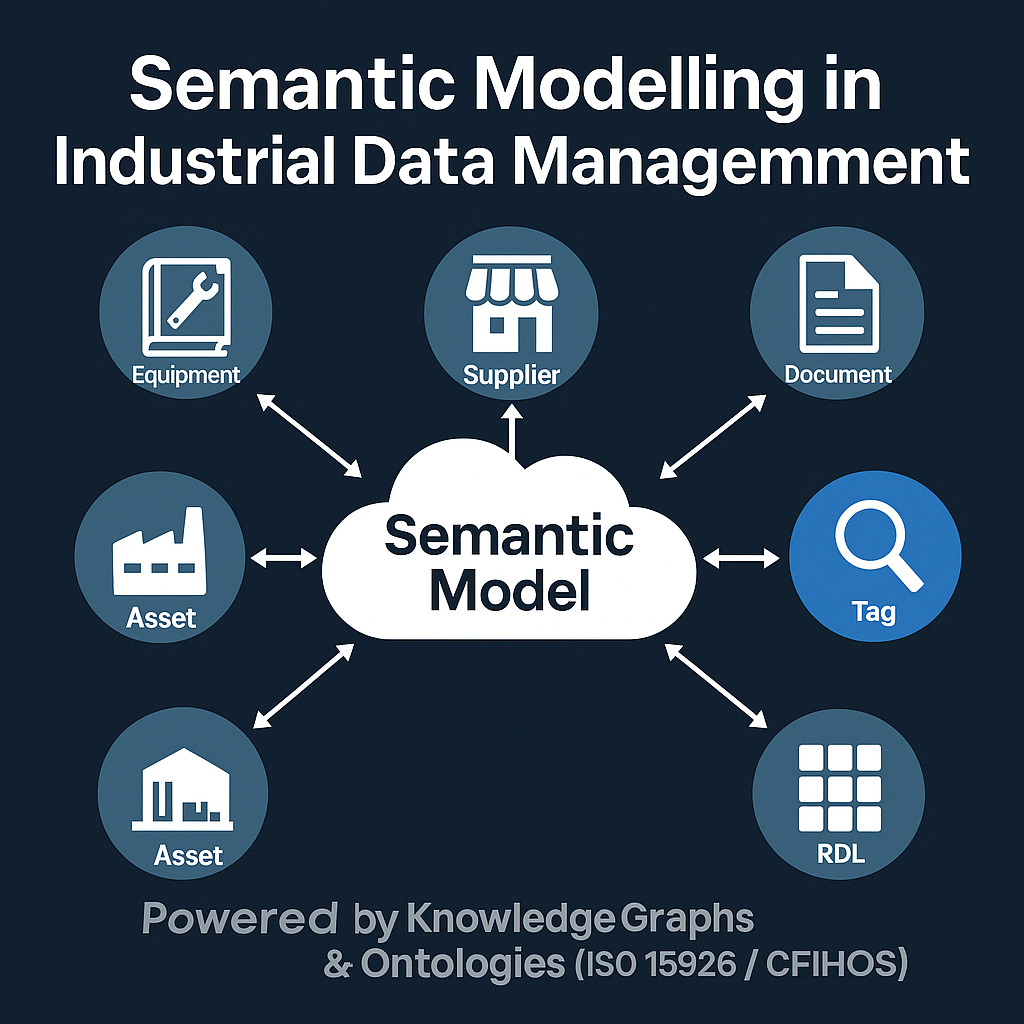Semantic Modelling is the process of defining how data elements relate to each other in a meaningful way.
Instead of treating data as simple values or labels, semantic models create logical structures that describe what data means — not just how it is stored.
This approach is essential in asset information management, engineering data exchange, and industrial digital twins, where thousands of systems need to communicate using consistent terminology.
Traditional databases rely on rigid schemas that don’t easily adapt to context. Semantic Modelling, by contrast, connects data through relationships, ontologies, and reference data libraries (RDLs) that describe assets, equipment, and spare parts consistently.

Semantic models use ontologies and knowledge graphs to represent meaning and relationships between entities.
This allows organisations to link data from multiple systems — such as CFIHOS, SPIR, and Master Data Management — into a unified, machine-readable structure.
This structure makes it possible to connect and query complex data across engineering, procurement, and operations systems.

Semantic Modelling enables seamless data exchange between EPCs, operators, and suppliers by ensuring all systems “speak the same language.”
By linking to reference data libraries like ISO 15926, E-Class, or CFIHOS, companies maintain high data quality and consistency across their ERP and asset management systems.
With data meaningfully connected, organisations can run smarter queries, automate data cleansing, and support predictive analytics.
Sharecat Data Services helps clients adopt semantic data principles through:
This enables true data-driven decision-making — powered by consistent, semantically linked information across the asset lifecycle.